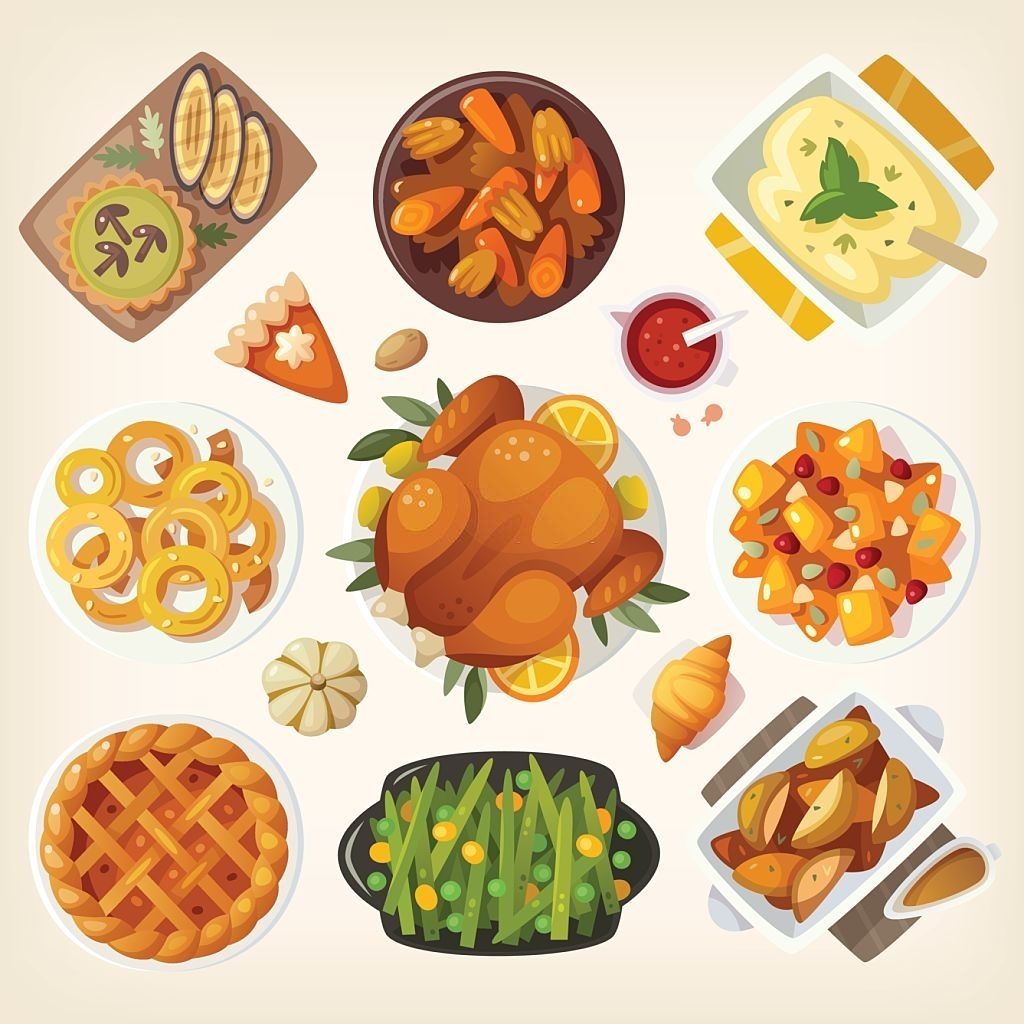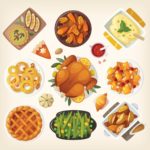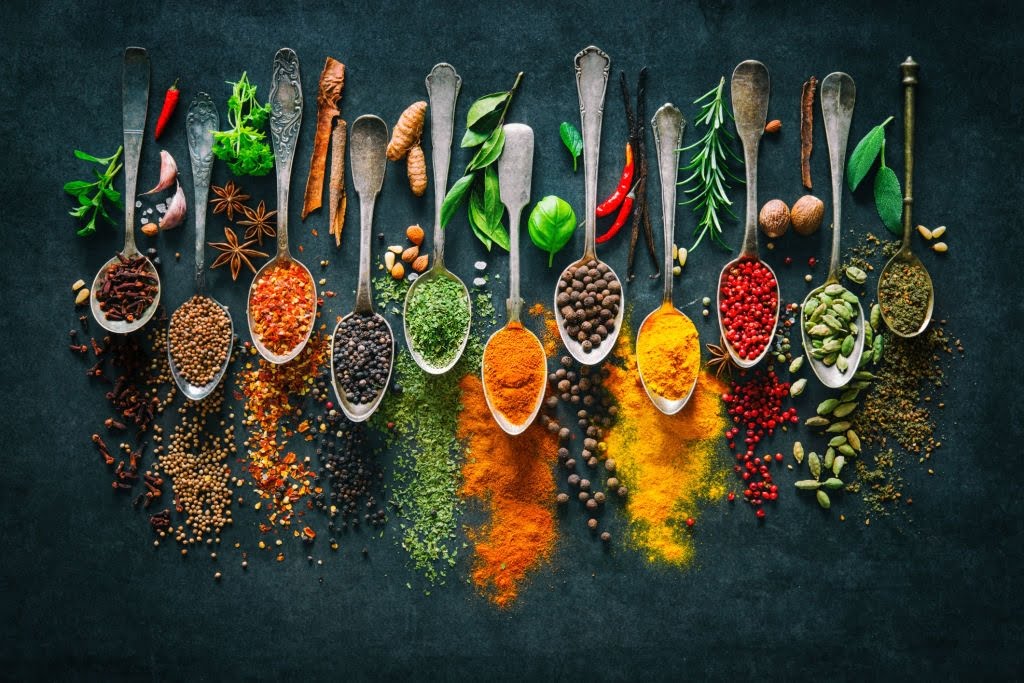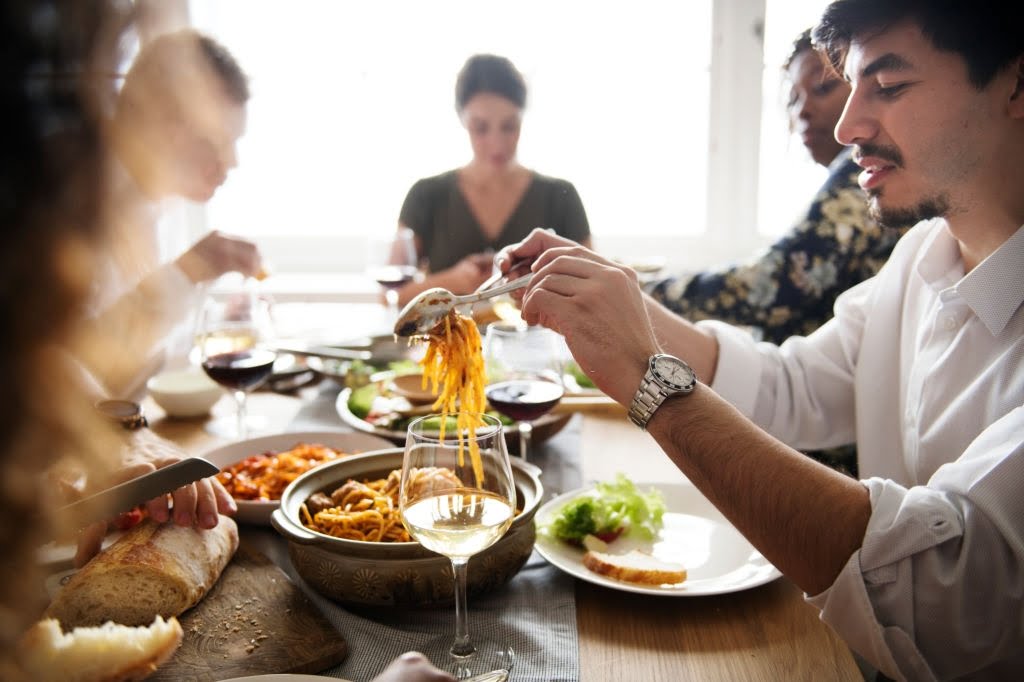The Importance of Food As More Than Sustenance

Author: Affan Nagi
Without food as a source of sustenance a human being cannot survive long before dying. Therefore food and its consumption is one of the most essential actions needed to ensure a human being’s survival. But as a source of sustenance for humanity, is not the only important role that food fulfills. This paper will focus on the impact food has on the social and cultural dynamics that not only make up humanity’s day to day life, but also helps differentiate the many ethnicities that make up the human population. In Sidney W. Mintz and Christine. Du Bois’s “The Anthropology of Food and Eating”, the way that food impacts humanity’s social and cultural dynamics are broken down into seven categories. These categories are “Food Ethnographies”, “Single commodities and substances”, “Food and Social Change”, “Food Insecurity”, “Eating and Ritual”, “Eating and Identities” and finally “Instructional Manuals”( Mintz 2012: 101). Attention will be given to two of the seven categories, “Eating and Ritual”, and “Eating and Identities”. Using medieval text from India to illustrate food and ritual, and the Jewish population of Denmark to illustrate food and identity, each of the two categories chosen will show how food plays a bigger role in humanities day to day life than just a means to consume sustenance.
In regards with Food and Ritual “food is used to comment on the sacred and to reenact venerated stories”. The use of food in this context helps binds a group of people to their faith (Mintz 2012: 107). The importance placed on food and its preparation in the Hindu culture is evident in readings of religious medieval texts from Bengal known as the Mangala Kavya, and specifically the Chandi Mangala. (Bhattacharya 1985: 169). These reading can most often be heard during festivals (Britannica Encyclopedia). Both texts are filled with poems describing the different meals that a number of spiritual deities important to the Hindu culture demand and consume as well as stories that place a significant importance of food consumption. Different types of food based on taste are assigned personality traits based on the specific God that favors that specific choice in food. Food preparation similarly hold a specific connotation and significance. For the Hindus the food you eat not only provides a dietary benefit but also illustrates the kind of person you are, based on the readings of the Mangala Kavya and the Chandi Mangala. With regards to food preparation who, when and how, all carry important connotations.
For women specifically food is a huge influencing factor in their day to day lives because of the importance of food preparation. This gives the women in the Hindu culture a role that is look as one of great social significance and meaning. “Procreation” and “culinary activity is her duty and right” (Bhattacharya 1985: 170). However because of the religious and sacrificial connotations placed on food preparation, a woman is not allowed to cook until she is married. Once married she is still not allowed to cook in her father’s home since she now belongs to another clan. This is because the married women of the Hindu culture believe that their status as married women gives them the ability to “perform the sacrificial act that the husband is duty bound to celebrate each day” (Bhattacharya 1985: 170). This celebration, the consumption of food, is also a religious ritual due to its sacrificial connotations. Because food has such a significant role in Hindu culture, a woman who is particularly skilled at the culinary arts is compared to Draupadi, who is made out to be a “model for wives and cooks” (Bhattacharya 1985: 170). Again the significance of food can be read in Draupadi’s, description as one who was never short of food and was capable of satisfying her five husbands. Food preparation is also associated with the goddess of love. For the Hindus food “is a matter of kama” (Bhattacharya 1985: 171). Because kama is desire “the women who prepares it celebrates thus the worship of the god of love” (Bhattacharya 1985: 171). Food is seen as a way for a woman to win her husband’s favor. Because certain foods can increase virility widows are not allowed to prepare heated dishes, since they no longer have a husband. This description of food preparation as a way for a woman to gain her husband’s favor and as the celebration of a god of love turns the ordinary task of cooking again into a religious ritual.
Hindu rituals based around food does not only concern food preparation carried out by married Hindu woman. There are also food rituals that are practiced to help pregnant Hindu woman in birthing a healthy male child. This is illustrated in the “ceremonial meal called Sadha (Bhattacharya 1985: 179). This ceremonial meal is traditionally served at the end of a woman’s pregnancy on two separate occasions. The first occasion Sadha is served is during a woman’s sixth month of pregnancy. The food being served during this ritual is prepared by the pregnant woman’s mother-in-law and consist of five fried dishes, fish and rice with milk. If the pregnant woman desires are not initially met additional dishes may be added based on her food desires. The second meal is prepared by the pregnant woman’s parents and is made up of the same dishes as the first ceremonial meal. The main purpose of these meal rituals is to satisfied the pregnant woman’s food desires. It is viewed as important in the Hindu culture for a pregnant women to eat well in order to maintain a healthy pregnancy that well result in a healthy child. Because the Hindus believe that pregnancy causes a woman to lose her appetite and desire only certain meals the Sadha ritual provides an opportunity to “serve her particularly appetizing dishes, which augur well, and which are, in addition, beneficial for her physiological well-being” (Bhattacharya 1985: 180 ). The second purpose of the Sadha ritual is to “ensure a male offspring for the family, and one that is as perfect possible” (Bhattacharya 1985: 180). The Sadha ensures health by making sure the woman is continues to eat by providing desirable meals. In order to ensure the birth of a male it is customary for a young boy to sit in the lap of the mother to be and share the food that was prepared for the Sadha ritual. Food for the Hindu people plays an enormous role in the birthing of children and is demonstrated by the Sadha ritual practiced today.
By labeling certain consumable items as foods and nonfoods the Hindu people are able to assign traits to their gods using the types of food requested and consumed based on the writings of the Chandi Mangala. The types of food consumed and or the amount of food that one has amassed have specific meanings for the Hindu people. An example of this is god Shiva’s meal request to his wife. Shiva asks his wife to prepare food using an herb known as Dhatura which is not considered a food in the Hindu religion. Because of his request and ability to consume Dhatura it reaffirms the Hindu belief that Shiva is not only “impure and dangerous” (Bhattacharya 1985: 175), but also the drinker of poison as according to myth. Shiva’s inability to store food and feed unexpected guests also reaffirms his position as the renouncer. By not following the exact guidelines for food consumption established by Hindu culture as well as not amassing the proper amount of food, Shiva perverts the sacrificial ritual that is food consumption in multiple ways thus establishing his character as the renouncer.
In today’s constantly shrinking world, traditional methods in distinguishing ethnic identities such as language, religion, race, and music are becoming obsolete. Because of the mixing of ethnicities, the once clearly dividing markers of identity such as religion and language have now become blurred. Even traditional foods, have lost their unique ability to identify due to the commercialization of foods from around the world. Foods unique to certain regions, religions, and cultures are now being enjoyed by people throughout the world. A Mexican woman today is now able to enjoy Korean cuisine at their leisure and a Korean man can enjoy Mexican food when they so choose. Does this make the Korean man Mexican or the Mexican woman Korean now? The lines of ethnicity has increasingly become blurred. Food however has not completely lost its power as a tool to establish ethnic identity. This is evident in the case of the Jewish population in Denmark. Because of the religious food guidelines placed on the Jewish population by their faith they are sometimes faced with a choice on whether to continue practicing what for the practicing Jews is known as Kosher eating habits, or to ignore the religious guidelines. Some examples of the Kosher guidelines are that “the food is not derived from the animals, birds, or fish prohibited in Leviticus 11 or Deuteronomy 14” and “that meat and milk have not been cooked together” (citation). The choice to continue Kosher eating or not however in itself is a form of identification based on what food is chosen for consumption. By choosing to continue eating only Kosher meals the individual is identifying themselves as Jewish. By choosing to conform and partake in Danish traditional eating festivities the individual is choosing to identify themselves as Danish. These types of choices that the Jewish population is forced to make, continue to play themselves out in three different scenarios. These scenarios are “Within the Household: Kosher Observance in the Home”, “Between group and other: Kosher observance in non-Jewish contexts” and “Within the group: Kosher Significance in the Jewish community” (Buckser 1999: 195). An examination of each scenario and potential outcome illustrates how choosing to remain Kosher or not contributes to the identification of an individual of the Jewish community living in Denmark.
Mixed marriages are quite common place in Denmark with many in the Jewish community choosing to marry outside of their faith. This creates an interesting dynamic within the household with regards to the kind of food is prepared and consumed within the household. Eating is an activity carried out by all members in a household “decisions about Kosher observance must be made together” (Buckser 1999: 201). This dynamic allows one from the Jewish community to remove him or herself from their Jewish identity because “food presents an ideal opportunity to manifest that choice” (Buckser 1999: 201). To establish a new identity outside of Judaism one can simply eat a non-kosher meal such as pork within their home. This help separates them from their Jewish identity because of the significant importance placed on koshered eating by the Jewish faith. The opposite can be said about one who is born outside of the Jewish faith and marries a Jewish man or woman. By participating in koshered eating one is now identified as becoming part of a Jewish family as opposed to the alternative which is a Jew leaving behind their faith and conforming and identifying as a Danish national, and not as a Jew. Whether to observe or disregard kosher tradition can lead to division or solidarity within the household. With regards to the latter if the non-Jewish half of the marriage decides to conform to kosher traditions this can be a reaffirm their spouses Jewish identity. “These efforts hold a great deal of meaning for Jewish partners providing a reassuring sign of acceptance of their Jewish identities”( Buckser 1999: 202). Not only does this conformity help one keep their Jewish identity but it is also an acknowledgement by that person’s spouse of their Jewish identity. This creates a single identity for the household regardless if both spouses adhere to the Jewish faith.
Many Jews in Denmark tend to identify themselves as Danish and conform to Danish culture. This includes music, clothing, and holidays. However almost of these same Jews still choose to adhere to their Jewish identity by observing kosher eating guidelines. This tends to create a conflict of identity out in social environments. How does one continue to conform to their surroundings and establish a national identity yet continue to practice kosher eating. Because Jews are a minority population in Denmark, many of the social events that they attend are hosted by non-Jews, and therefore do not contain meals that are koshered. Their hosts are often unaware of ones identity as Jew because most Jews again choose to assimilated themselves into the Danish culture. When confronted by their host about the reason for not eating, as it is customary in Denmark for a host to make sure their guests are fed, their answer can potentially reveal their identity to their host, as well as reaffirming their identity to themselves. If a Jew informs their host that they are committed to practicing Kosher eating they are now identified as a Jew. “Jews who insist on keeping kosher tend to find themselves singled out on social occasions. They attend not merely as guests but as Jews, a different category of person with different needs and customs, a status reaffirmed with each successive course (Buckser 1999: 197).
Whether the person in question prefers to identify themselves as Danish or Jewish, because of their kosher eating they have become identifiable to others as simply Jewish. Some Jews instead decide that in order to firmly establish their identity as a Danish it is important that they conform and eat what is serve to them, thus separating from their previous Jewish identity. Others continue to hide their strict adherence to kosher rules by using “a non-religious explanation” (Buckser 1999: 197). One explanation is that individual is in fact vegan, thus avoiding pork which is not allowed to be eaten by kosher law. This enables a Jewish individual to not only keep their Jewish identity but keep it a secret, as well as creating a second social identity, thus avoiding being labeled and treated differently based on their Jewish faith. Whether a Jewish man or woman chooses to practice kosher eating it is impossible for one not to become conscious of their identity. “However one approaches it, then, eating with non-Jews requires delineation of the relationship between Danish and Jewish identity” (Buckser 1999: 198). The act of eating with non-Jewish forces one to choose their old Jewish identity, a new Danish identity or whether to create an identity for social purposes keeping their Jewish identity to oneself. Food in this scenario is not simply a way to obtain sustenance but also a tool for identification.
Kosher eating not only is used to identify someone as Jewish or not, but can also be used in identifying what kind of Jew a person may be. Meaning of the observance of kosher eating can be measured and used to determine how strict an individual or family adheres to the eating guidelines described by Judaism. The most visible form of identification using kosher food has already been noted, which is the rejection of kosher guidelines and therefore the rejection of a Jewish identity. Because Jewish eating guidelines are open to interpretation it “allows for a wide variation in strictness and plausible arguments can be made for different interpretations of correct practice.” Depending on this measurement of adherence to kosher eating one can surmise whether one is more liberal or conservative in their religious beliefs. This use of identification usually takes place in a third setting outside of the household and social events with non-Jews. This setting is within the social confines of the Jewish community itself, in other words between Jews and other Jews. “The ways that people eat signify not only that they are Jewish, but precisely what sort of Jews they are” (citation). For example a loose interpretation of the guidelines with regards to meat would allow a more liberal Jew the luxury of purchasing ordinary beef. Although pork and not beef is specifically banned under kosher guidelines more conservative Jew may believe that it is not kosher to eat ordinary beef, “since the rules required slaughter by an approved ritual slaughter” (Buckser 1999: 198).
These deviations in interpretations create subgroups used to identify what type of Jew one is based on their eating habits. These subgroups are quite numerous within the Jewish communities, due to the multitude of interpretations. These differences become apparent during social events where food is served. “Through the sorts of meats they serve and the methods they use to prepare them, individual Jews manifest their understanding of the meaning and importance of Jewish difference in Denmark, both to themselves and to their Jewish guests” (Buckser 1999: 199). These events now create a social structure that is perceptible within the Jewish community. Where as an outsider might see the entire community as just one Jewish identity, within the community food choices creates separate identities that the Jewish people can assign themselves to base on their adherence to the kosher guidelines. Even the act of shopping for said foods can identify what type of Jewish sub group on belongs to. Depending on which of two shops in Denmark a Jew chooses to shop at can be used to identify which subgroup they belong to. “For some, shopping at Samson’s also indicates an affinity with the more Orthodox Eastern European wing of the community” (Buckser 1999: 200). These distinctions are significant because it is important to recognize the many different forms of Jewish identity both as an outside and a member of the Jewish community. Food allows for these distinctions to be made and recognize.
Food is absolutely essential to human survival but is not its only function. Food also plays an important role in both cultural rituals, and establishing social identity. The rituals carried out by the Hindu people focus heavily on the foods eaten, the preparer of foods, and satisfying the food cravings of the pregnant Hindu woman. Certain foods are assigned traits and avoided based on the religious medieval writings in the Chandi Mangala and Mangala Kavya. As ethnic lines through out the world continue to be blurred the Jewish community can still establish a separate identity not only with the Christian Danish population but also within their community, based on whether the choose to follow traditional eating habits outline by Judaism. Food can help identify someone as Jewish and well as what kind of Jew they are based on their adherence to kosher guidelines. Both food and rituals and food and identity are two ways that food plays a greater role in human day to day life than just as a means of sustenance.
References
Sidney W. Mintz and Christine M. Du Bois. 2002. The Anthropology of Food and Eating. Annual Review of Anthropology. Vol. 31:99-119
Bhattacharya, France and Sharma,Radha. 1985. Food Rituals in the `Chandi Mangala’. India International Centre Quarterly. Vol. 12, No. 2
Buckser, Andrew. 1999. Keeping Kosher: Eating and Social Identity among the Jews of Denmark. Ethnology. Vol. 38, No. 3







Responses